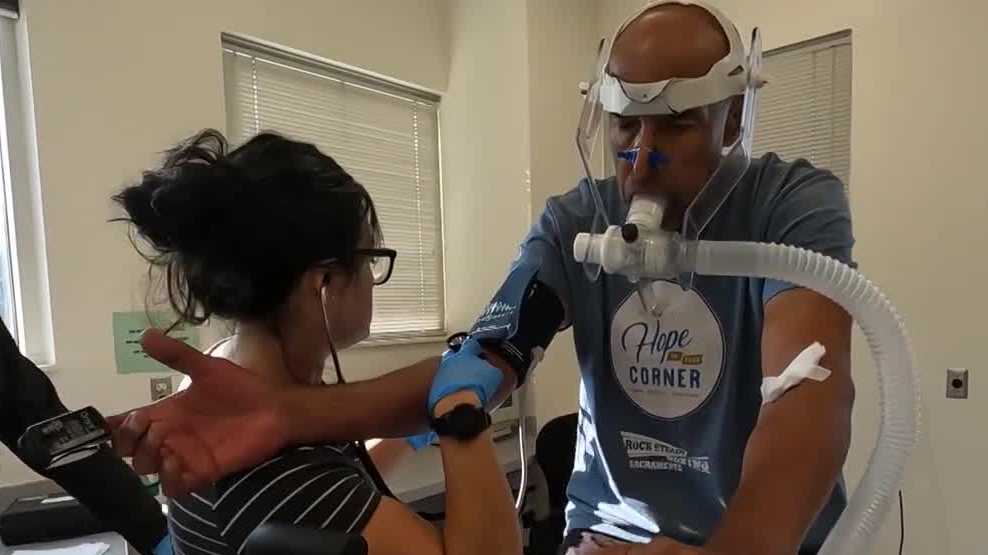Can exercise help slow the progression of Parkinson’s disease in patients? That’s the question a team of Sacramento State University faculty and student researchers are trying to answer in a new study. University professors Gwennael Begg and Matt J.N. Brown are leading the research. The study, which began this summer, involves more than 20 participants from the Sacramento area and includes both at-home exercise and in-person exercise with a research team within the Human Performance Institute. Citrus Heights participant Tony Cepeda said he receives weekly emails tracking and reporting his activity level and amount of exercise. This email also includes a video demonstrating different exercises that participants can perform. In the in-person test, participants ride a stationary bike while connected to devices that monitor things like oxygen consumption, carbon dioxide production and heart rate. Blood will also be drawn several times after exercise to see how exercise affects Parkinson’s patients at a molecular level. Other tests are also being conducted. Professor Brown said the ultimate goal was to see if doctors could prescribe exercise as a way to slow or stop symptoms of the disease in patients. “If we can find a level of exercise or other non-invasive treatment” that could potentially modify the disease and slow or stop its progression, that would be incredible, he said. . Cepeda, 68, says he doesn’t feel any symptoms, especially the tremors. , when he exercises. Cepeda said he exercises regularly, including boxing, walking and physical therapy. “I have Parkinson’s disease. Parkinson’s disease is not me,” Cepeda said. Cepeda said he learned about the study through his organization, the Parkinson’s Disease Association of Northern California. member. What is his hope? Help this team move closer to finding a cure. “As long as we can find something in our research that can help someone in the future,” he said. “I’m just trying to do my little part.”
Can exercise help slow the progression of Parkinson’s disease in patients?
That’s the question a team of faculty and student researchers at Sacramento State University is trying to answer in a new study.
University professors Dr. Gwennael Begg and Dr. Matt J.N. Brown are leading the research. The study, which began this summer, includes more than 20 participants from the Sacramento area.
This includes exercising both at home and in person with our research team within the Human Performance Institute.
Citrus Heights participant Tony Cepeda said he receives weekly emails tracking and reporting his activity level and amount of exercise. This email also includes videos showing various exercises participants can perform.
In the in-person test, participants ride a stationary bike while connected to devices that monitor things like oxygen consumption, carbon dioxide production and heart rate. Blood will also be drawn several times after exercise to see how exercise affects Parkinson’s patients at a molecular level. Other tests are also performed.
Brown said the ultimate goal is to see if doctors can prescribe exercise to patients as a way to slow or stop symptoms of the disease.
“It would be incredible if we could find disease-modifying levels of exercise and other non-invasive treatments that could slow or stop disease progression,” he says. .
For Cepeda, 68, he doesn’t feel the symptoms as much, especially the tremors, when he’s exercising, he said. He said he exercises regularly through boxing, walking and physical therapy.
“I have Parkinson’s disease. Parkinson’s disease doesn’t make me sick,” Cepeda said.
He learned about the study through the Parkinson’s Disease Association of Northern California, of which he is a member.
What is his hope? This team will help move us closer to finding a cure.
“As long as I can find something that will be useful for someone’s research in the future,” he says. “I’m just trying to do my little part.”
